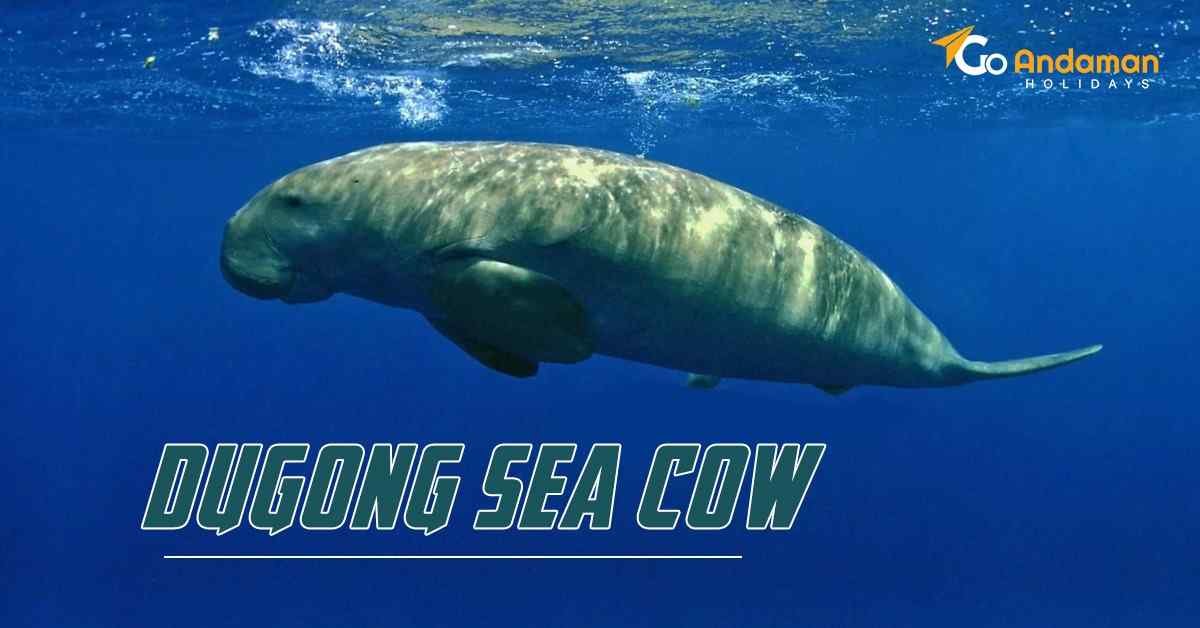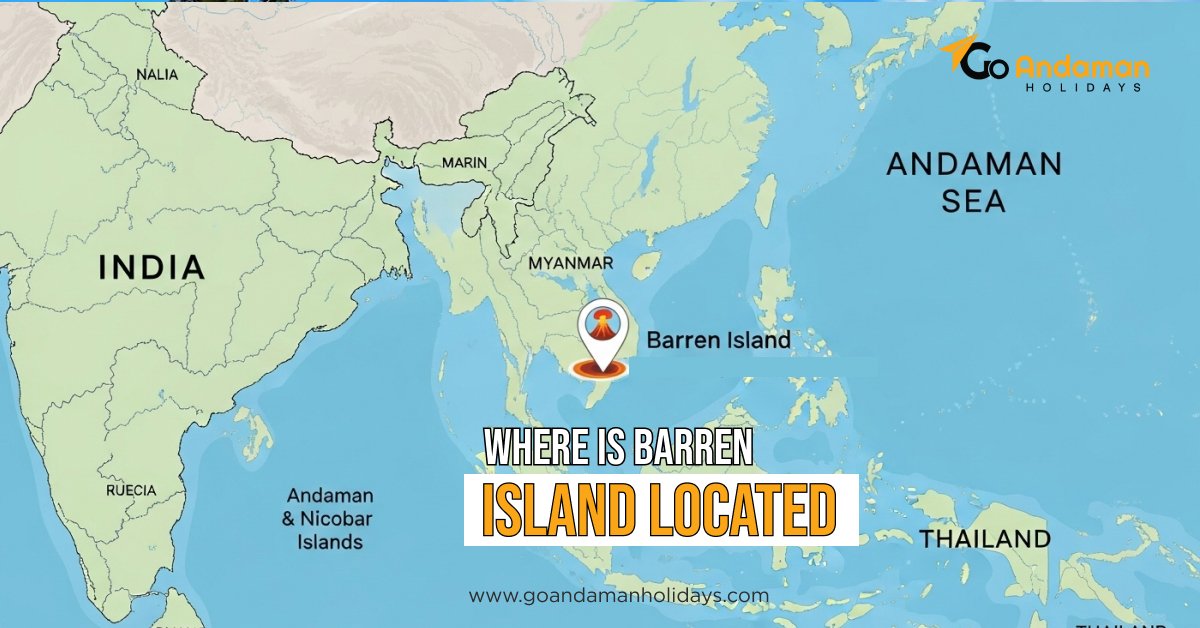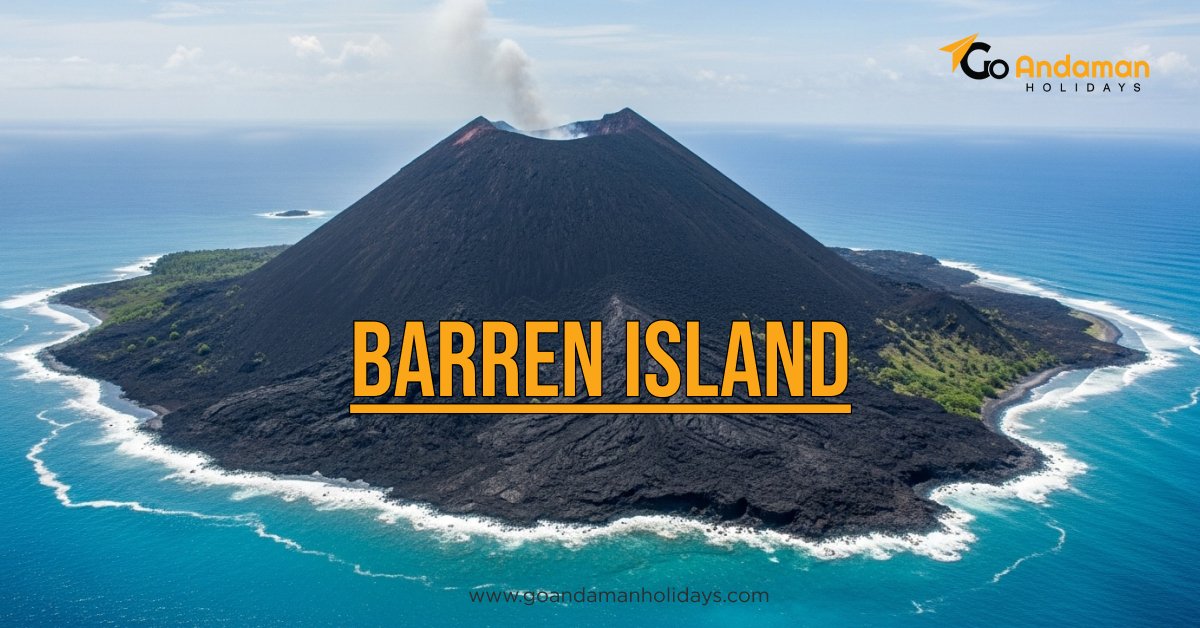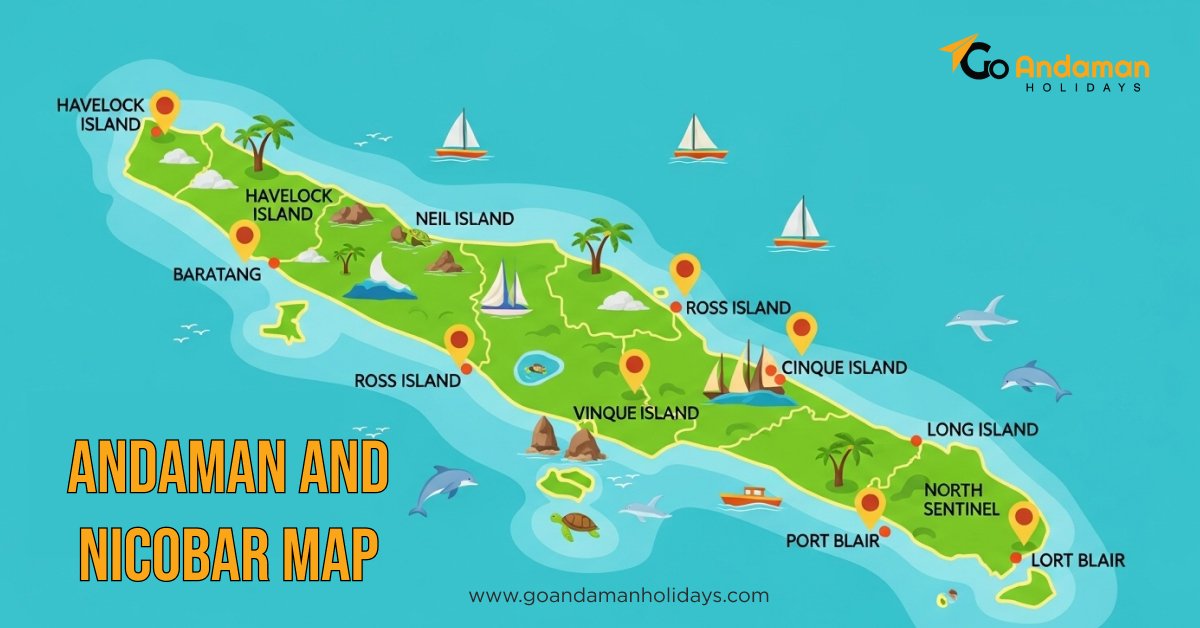
- Go Andaman Holiday
- 11-07-2024
- 0 Comments
Dugong Sea Cow: The State Animal of Andaman and Nicobar Islands
Did you know?
More than 6400 species of flora and fauna live under the sea in the Bay of Bengal. Andaman and Nicobar Islands, their habitat and home, attract tourists worldwide to experience the spectacular marine biodiversity.
But among all the animals the dugong sea cow is the state animal of Andaman and Nicobar Islands and is also known as the ‘lady of the sea’.
In this blog, we will discuss this exotic marine organism and its stunning features in detail.
Habitat and Distribution
Throughout the warmer latitudes of the Pacific and Indian Oceans, dugongs are found in plenty. This endangered species of Andaman and Nicobar Islands, are found in certain creeks.
Here are the details of their natural habitat in the archipelago.
1. Ritchie’s Archipelago
Ritchie's archipelago in South Andaman forms one of the critical dugong habitats in the islands. Situated 20 KM east of the mainland or Great Andaman, Ritchie’s Archipelago is a cluster of small islands.
Dugongs have been sighted on Inglis Island, Henry Lawrence Island, John Lawrence Island, and Outram Island among many others.
2. North and Middle Andaman
According to a report by G.C. Rao in the 1990s, Dugong colonization was found in Baratang Beach, Long Island, Parkinson Island, and Purlob Island.
Recent reports claim otherwise. A recent study by C. Raghunathan, K. Venkataraman, and P. T. Rajan suggests that the dugong population has hit a steep downfall and can be found in only a few places in lesser numbers.
Some of them are- Ross Island, Smith Island, Lamia Bay, Ariel Bay, and North Reef Island.
3. South Andaman
In South Andaman, the dugong population is very scattered and hard to locate, though there have been occasional sightings by tourists or local fishermen.
One adult dugong about 3m long was observed at a depth of 5m in the seagrass bed of Kodiaghat near Chidyatapu.
4. Little Andaman
In little Andaman, Dugong Creek is a popular tourist spot to observe dugongs. They still live in that area and if lucky, you can see them jumping out of the water surface at times.
From Port Blair, you can book a ferry and reach the Dugong Creek Village within 6 hours.
Features and Characteristics of Dugongs
Dugongs belong to the Dugongidae family. They are also the only species left of this family.
They have a lifespan of 70 years but their survival is in danger due to the increasing risk of poaching and habitat destruction. Here are 7 primary features of the dugong fish
1. Size
Dugongs are very heavy and have a large body. They can reach body lengths of more than 13 feet (4 m). They weigh more than one metric tonne.
2. Food
Dugongs are herbivorous mammals. Dugongs are also known as sea cows because their diet consists mainly of seabed grasses.
They consume the whole plant while eating, including the roots.
They are primarily calm and passive animals, living deep inside the sea, upon the sea bed due to their food preferences.
They are the only herbivorous mammals in the sea with the characteristics of that of a cow.
3. Thawte
Dugongs, also the state animal of Andaman and Nicobar Islands, are known as sea-pigs or pani-suwar (thawtee).
Due to the heavy structure of their body, their huge size, and their eating habits they have been named as that by the locales.
4. Back Defense
Most of the blubber or fat is settled on the back of the dugong’s body and they use it as their defense mechanism.
They aren't fierce or aggressive animals. They do not strike small fishes or other smaller organisms.
They respond timidly only when chased or attacked. Dugongs escape their predators by showing their back which can’t be targeted easily. They also move swiftly across the water.
5. Brain
Dugongs have very wee-sized brains. They do not develop much internally, either. This happens because they do not have to engage in hunts and are very peace-loving creatures.
That is also why they are endangered species, as dugongs can be hunted very easily.
They also occasionally crash with boats or ferries which causes a decrease in the already depreciating number.
6. Lekking
Male dugongs can be seen impressing their female counterparts during appropriate seasons (there is no fixed season, they do it as they please!).
This process of impressing the other dugongs is called lekking. Eight years to eighteen years is the age in which they develop a sexual urge and become ready to reproduce.
A protrusion of tusks is visible in the male dugong due to an increasing level of testosterone.
7. Reproduction
Dugongs reproduce via internal fertilization and give birth to large young, which they nurse for as long as a year and a half.
Adult dugongs do not have any natural predators, but juveniles may be eaten by saltwater crocodiles, killer whales, and large, coastal sharks.
With the help of internal fertilization, dugongs produce a large young one. They are then nursed by the mother for a year and a half.
They run the risk of being attacked by whales, crocodiles, and coastal sharks. So, they need protection until they grow into large size and develop their defence mechanism.
Reasons for Endangerment
Here are 3 main reasons why dugongs are moving toward extinction at a fast pace-
1. Food
Dugongs have been hunted by humans for more than 30 years now. Dugong meat is believed to be a great source of protein and has been categorized as an aphrodisiac food (food that enhances your sexual health).
2. Oil
The oil that is made from the body fat of dugong is believed to be a great source of nutrients. This is causing illegal poaching activities even today as the number of dugongs decreases steadily not only in India but all over the world.
3. Destruction of Natural Habitat
Loss of seagrass habitat or its degradation due to the water pollution caused by the development of industrial areas near the coast are the main reasons for the decreasing number of dugongs.
If there is not enough sea grass to eat then the dugong does not breed normally.
They need enough grass to survive and breed naturally. We must make efforts to conserve the seagrass habitat.
They also often become victims of bycatch, the accidental entanglement in fishing nets.
Conclusion
Dugongs, the sea cows of Andaman, and the state animal of Andaman and Nicobar Islands remain one of the most popular attractions for tourists.
Most Andaman tour packages consist of a trip to Dugong Creek.
The Indian government has taken certain measures to conserve the natural habitat of the dugongs and we as responsible citizens of the country should also try and make an effort to conserve their home.
FAQs
1. When was the dugong sea cow first discovered?
It was first classified by Müller in 1776 as Trichechus dugon, a member of the manatee genus previously defined by Linnaeus.
2. When was the dugong sea cow considered endangered?
Dugongs are listed as vulnerable on the IUCN Red List and have been considered so since 1982. They are being endangered by persistent loss of seagrass habitat and pollution of coastal areas.
3. What are the other endangered species of the Andaman and Nicobar Islands?
An overall number of 46 different terrestrial mammal organisms have been discovered in the archipelago. 3 critically endangered species among them are the Andaman shrew, Jenkin's shrew, and Nicobar shrew.
4. Which country has the largest population of dugong fish?
In the whole world, Australia has the largest number of dugongs living in natural habitats. Shark Bay, Western Australia is home to over 10,000 dugongs.




